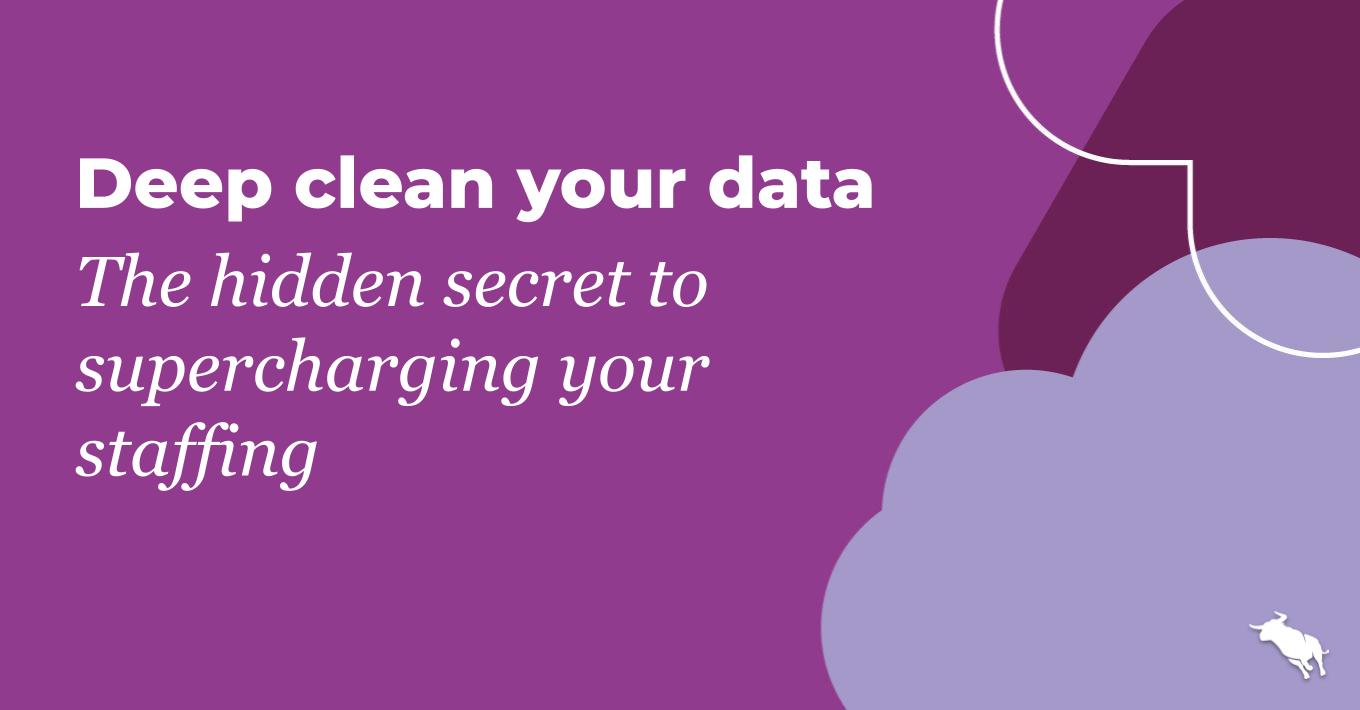AI. Automation. Predictive hiring. The latest recruitment tools can streamline everything from sourcing to placement, but only if your data is current and clean. Without clean data, even the most advanced tools underperform, causing delays, misfires, and lost opportunities.
While cleaning up your database can seem overwhelming, it’s a task every forward-thinking agency should prioritize. In this post, we’ll explore why data hygiene is important, how dirty data can hurt your business, and how you can start making real progress today.
Why data hygiene matters
Think of data hygiene as the foundation of your recruitment tech stack. It ensures your database is accurate, complete, and current. Clean data allows your team to quickly find the information they need, make smarter decisions, and streamline workflows. This means faster candidate placements, more responsive client interactions, and ultimately, stronger business growth.
This matters now more than ever because of the rising demand for AI and automation in recruitment. AI-powered tools can help you source the best candidates, match people to roles faster, and even predict future hiring trends. But those tools can only be effective if they’re pulling from a clean database. Accurate, consistent, and clean data enables smarter matching algorithms, more efficient sourcing, and automated administrative tasks that free up time for high-value activities.
In other words, clean data increases the impact of every tool in your recruitment stack, driving better performance and higher results across the board.
How dirty data can cost you
Bad data doesn’t just sit quietly in your system. It creates duplicate work, leaves critical gaps, and causes missed opportunities. It wastes valuable time and resources your team could spend building relationships or closing deals.
Most of the time, messy data comes down to good old fashioned human error. Whether it’s typos, inconsistent formatting, or basic entry mistakes, data entered manually is prone to errors. And over time, these errors add up.
Another issue is poor workflows. If your team isn’t regularly updating the database, it can quickly become full of outdated information. Having a process for maintaining and updating your records regularly can help you stay on top of things. Inversely, requiring too many mandatory fields from your team can overwhelm them and result in missing or inconsistent data. It’s a balancing act.
Additionally, data from external sources can be improperly parsed or imported. A large chunk of your data may come from various platforms or integrations, and if those connections aren’t accurate or up-to-date, it can result in incomplete or misplaced information.
Just start somewhere
Cleaning up your database doesn’t have to be overwhelming. In fact, the hardest part is simply getting started. It’s easy to put off when it feels like a massive, all-or-nothing undertaking, which is why you should focus, instead, on small, consistent steps.
You don’t need a perfect plan before you begin. Start by focusing on what’s most frustrating or holding your team back. Maybe that’s duplicate entries, outdated contacts, or incomplete records. Choose one area and chip away at it. Each fix, however small, improves the system as a whole.
As the clutter clears, things get easier. Tools work better. Teams move faster. Communication improves. And when your database starts working for you instead of against you, it becomes clear why the effort was worth it.
Master these best practices
Your database is like a living system; it needs regular care to perform at its best. These proven strategies will help you strengthen data integrity, reduce friction, and maximize ROI across your tech stack.
- Conduct regular audits. Schedule monthly or quarterly check-ins to identify duplicates, outdated records, or formatting issues. (Better yet, set up automations that can flag them for you.)
- Adopt a database-first mindset. Before sourcing externally, make sure your team checks your CRM/ATS. With advanced search tools, you can surface high-quality candidates you already have.
- Streamline your tech stack. Bring all your data into one centralized platform. This helps you analyze how front-office efforts translate to business outcomes and measure ROI more effectively.
- Balance tech with people. Use automation tools to merge duplicates or enrich profiles. But also assign clear ownership for ongoing data hygiene. The best results happen when humans and tech work together.
The bottom line
Your recruiting tools are only as smart as the data that powers them. A little cleanup can unlock major results; think faster workflows, smarter targeting, and better performance across the board. Start small and start today.










